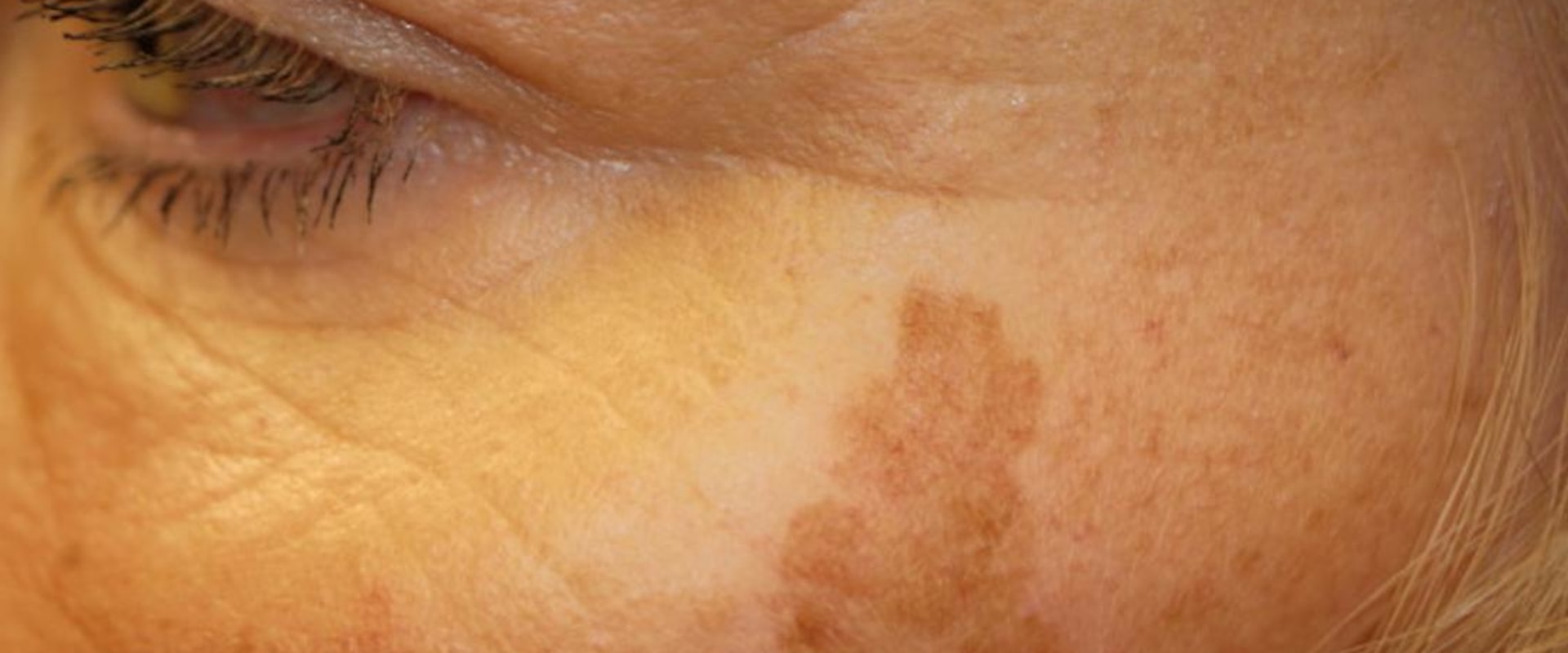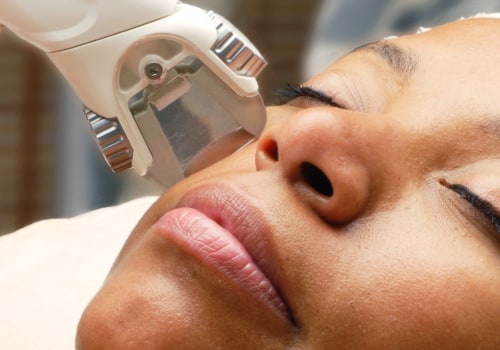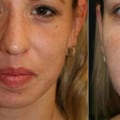Pigmentation changes in the skin can be a frustrating and embarrassing problem. From age spots to melasma, this condition can cause discoloration, uneven skin tone, and even facial disfigurement. Fortunately, there are treatments available that can help reduce the appearance of pigmentation changes in the skin. In this article, we'll explore the causes of pigmentation changes in the skin and discuss some of the treatments available for those suffering from this condition. Skin pigmentation changes can range from freckles and age spots to melasma and vitiligo.
While some of these changes are due to genetics, others can be caused by sun exposure, hormones, and medications. Fortunately, there are a number of treatments available to help reduce the appearance of pigmentation changes in the skin. These treatments include creams, laser therapy, chemical peels, and phototherapy. Freckles are small, light brown spots that can appear on the face, arms, and other areas of the body. They tend to become more visible with sun exposure and usually fade in winter.
Freckles are generally harmless and can be treated with chemical peels or laser therapy. Age spots, also known as solar lentigines, are flat spots on the skin that are usually brown or black. They often appear on the face, hands, arms, and other areas exposed to the sun. Age spots can be treated with creams containing hydroquinone or other lightening agents, as well as with laser therapy. Melasma is a common skin condition characterized by dark patches on the face. It is more common in women than men and often appears during pregnancy.
While it can be treated with topical creams and chemical peels, laser therapy may be necessary for more severe cases. Vitiligo is a condition characterized by white patches of skin due to loss of pigment. It is most common in people with darker skin tones and is thought to be caused by an autoimmune reaction. Vitiligo can be treated with creams containing steroids or other medications, as well as phototherapy or laser therapy. Laser hair removal is a popular treatment for unwanted hair, but it can have long-term side effects such as hypopigmentation and hyperpigmentation. Hypopigmentation occurs when the treated area of the skin becomes lighter than surrounding skin due to the destruction of melanin-producing cells.
Hyperpigmentation occurs when the treated area of the skin becomes darker than surrounding skin due to an increase in melanin production. Changes in skin pigmentation can have a significant impact on a person's self-esteem. Fortunately, there are a number of treatments available to help reduce the appearance of these changes. While some of these treatments may have long-term side effects, they can offer relief from the symptoms associated with pigmentation changes.
Types of Skin Pigmentation Changes
Skin pigmentation changes can include freckles, age spots, melasma, and vitiligo. Freckles are small spots on the skin that are usually found on the face, arms, and shoulders.They are more common in fair-skinned people and are caused by excessive exposure to the sun. Age spots, also known as liver spots, are dark brown spots that usually appear on the face, hands, and arms and are caused by sun exposure over time. Melasma is a condition in which patches of skin become darker than the surrounding skin. It is usually caused by hormonal changes, such as pregnancy or taking birth control pills, and is most common in women.
Vitiligo is a condition in which patches of skin lose their pigment and become lighter in color than the surrounding skin. It is an autoimmune disorder and can affect people of any age or ethnicity.
Long-Term Side Effects of Laser Hair Removal
Laser hair removal can have long-term effects on skin pigmentation. While the procedure is generally safe, it can cause both hypopigmentation and hyperpigmentation in some cases. Hypopigmentation is a lightening of the skin due to the destruction of melanin-producing cells, while hyperpigmentation is an increase in pigmentation resulting from increased production of melanin.Both conditions can be permanent and may require further treatment. Hypopigmentation is the most common side effect of laser hair removal, and can be caused by any type of laser treatment. This condition results in lighter patches of skin where the laser has been used. In most cases, the hypopigmented area will gradually return to its original color over time, however, in some cases the discoloration can be permanent. To reduce the risk of hypopigmentation, it is important to follow all aftercare instructions provided by your medical practitioner. Hyperpigmentation can also occur after laser hair removal, although this is less common.
This condition is caused by an overproduction of melanin in the treated area, resulting in darker patches of skin. In most cases, hyperpigmentation will fade over time but can also be permanent. To reduce the risk of hyperpigmentation, it is important to use sunscreen and protect the treated area from sunlight for at least four weeks after treatment. If you experience any long-term side effects from laser hair removal, it is important to seek medical advice. Your doctor or dermatologist may suggest a range of treatments to reduce the appearance of hypo or hyperpigmentation.
Causes of Pigmentation Changes
Pigmentation changes in the skin can be caused by a variety of factors, including genetics, age, sun exposure, hormones, and medications.Some of these causes are out of our control, while others may be prevented or treated. Genetics is the most common cause of skin pigmentation changes. It’s possible to inherit certain genes that make you more prone to developing skin discoloration. Age is also a factor, as our skin tends to change with time.
Sun exposure can also cause pigmentation changes, as UV rays can darken the skin and increase the production of melanin in some areas. Hormones can play a role as well, as fluctuations in hormone levels can lead to melasma or other pigmentation changes. Finally, certain medications can cause pigmentation changes as a side effect.
Genetics
Genetics is one of the most common causes of skin pigmentation changes. Certain genes make people more prone to developing certain types of skin discoloration, such as freckles or age spots.While these gene variations are usually harmless, they can have an effect on the way our skin looks.
Sun Exposure
Sun exposure is another major cause of skin pigmentation changes. UV rays from the sun can darken the skin and increase the production of melanin in certain areas. This can result in sun spots, freckles, and other types of discoloration. It’s important to use sunscreen to protect your skin from the sun’s harmful rays.Hormones
Hormones can also play a role in pigmentation changes in the skin.Hormonal fluctuations during pregnancy or menopause can lead to melasma or other types of discoloration. Additionally, certain medications used to treat hormone imbalances may cause pigmentation changes as a side effect.
Medications
Certain medications can also cause pigmentation changes in the skin. These drugs include antibiotics, birth control pills, and anti-seizure medications. If you are taking any of these medications and notice any changes in your skin, talk to your doctor about whether or not it could be a side effect.Treatments for Pigmentation Changes
When it comes to treating pigmentation changes in the skin, there are a variety of options available depending on the cause.Treatments may include the use of topical creams, laser therapy, chemical peels, and phototherapy.
Creams
- Certain topical creams may be prescribed by a doctor for the treatment of pigmentation changes. These creams typically contain ingredients such as hydroquinone or retinoids, which can help to reduce the appearance of pigment discoloration. Creams may also contain other ingredients such as vitamin C, kojic acid, and alpha-hydroxy acids that can help to lighten the skin.Laser Therapy - Laser therapy is another popular treatment option for reducing pigmentation changes in the skin. This type of treatment uses a laser to target specific areas and reduce the appearance of pigment discoloration. Laser therapy is most commonly used to treat melasma and other forms of hyperpigmentation, but it can also be used to treat conditions such as vitiligo.
Chemical Peels
- Chemical peels are another popular treatment option for reducing pigment discoloration.Chemical peels use a combination of acids to remove the top layer of skin, revealing brighter and more even-toned skin underneath. Chemical peels can be used to treat a variety of conditions, including melasma and age spots.
Phototherapy
- Phototherapy is a form of light therapy that can be used to reduce pigmentation changes in the skin. This type of treatment uses either natural sunlight or artificial light sources to target affected areas of the skin, resulting in a lighter and more even skin tone.Phototherapy is often used to treat conditions such as melasma and vitiligo. In conclusion, changes in skin pigmentation can be caused by a variety of factors such as genetics, age, sun exposure, and medical conditions. Pigmentation changes can have a significant effect on a person's self-esteem and can be treated using various methods. However, it is important to remember that laser hair removal carries the risk of long-term side effects such as hypopigmentation or hyperpigmentation. Therefore, it is important to consider all potential risks before undergoing this procedure.







